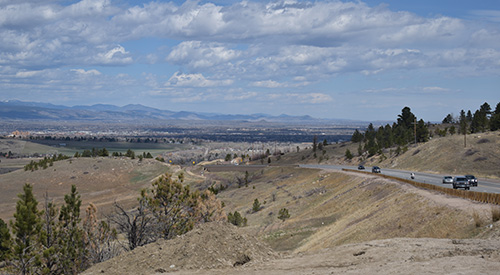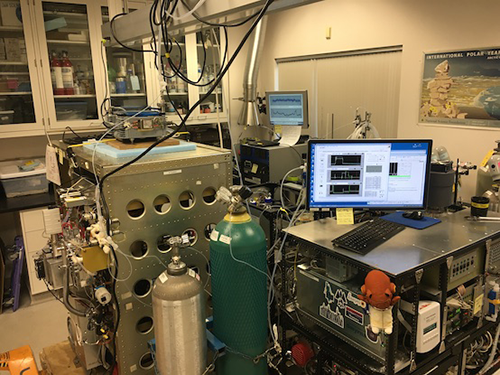COVID-AQS 2020


What: COVID Air Quality Study (COVID-AQS) 2020
Where: NOAA David Skaggs Research Center
When: Spring 2020
How: Ground site measurements
The COVID-19 outbreak is a health crisis that has completely disrupted our way of life. It also provides an unprecedented opportunity to assess changes in U.S. emissions and urban air quality due to decreased traffic and economic activities. The current reduced traffic activity offers a glimpse into a potential future of urban air quality, due to the ongoing electrification of the U.S. transportation fleet, which would reduce emissions of urban greenhouse gases (GHG), nitrogen oxides (NOx), carbon monoxide (CO), and gasoline-related volatile organic compounds (VOCs). This will also change the relative contribution of volatile chemical products (VCPs) to the total urban VOC emissions.
Researchers from NOAA CSL and the University of Colorado Cooperative Institute for Research in Environmental Sciences (CIRES) conducted measurements from the NOAA David Skaggs Research Center in Boulder, Colorado. Measurements include VOCs measured by a Proton Transfer Reaction Time-of-Flight Mass Spectrometer and a Gas Chromatography Mass Spectrometer. Measurements also include carbon monoxide (CO) and nitrogen oxides (NOx = NO + NO2) with commercial and custom instruments. In addition, Doppler lidar is providing mixed layer height and horizontal wind profiles, while the Tunable Optical Profiler for Aerosol and oZone (TOPAZ) lidar is providing ozone and aerosol backscatter vertical profiles. In situ measurements of the aerosol chemical composition and size distribution are generating important data on the particulate matter during this time period. All of these measurements will then be analyzed and compared to past in situ measurements at CSL, along with satellite data, and used in regional air quality computer models.
For further information, download the COVID-AQS White Paper
